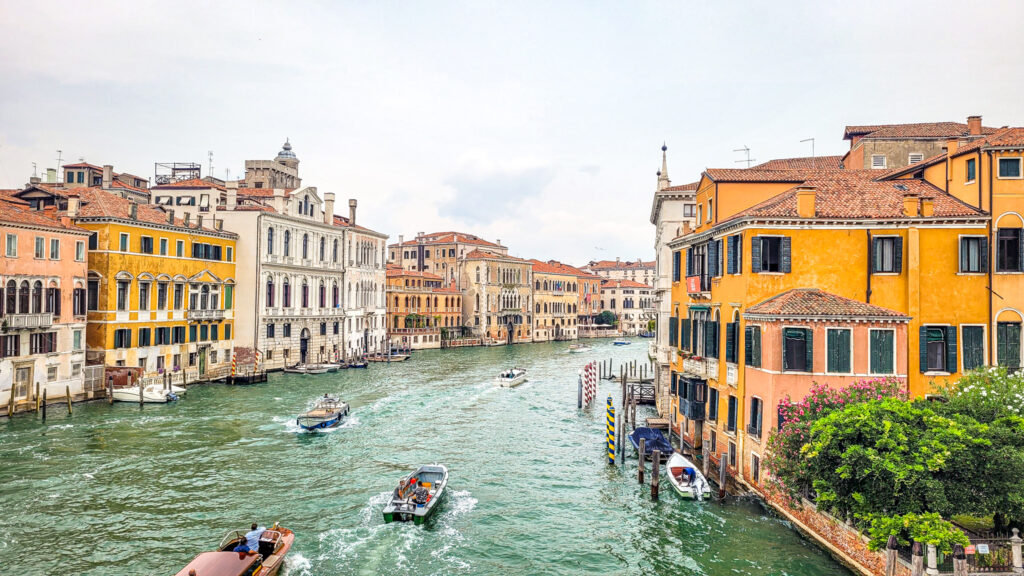Venice is one of the most spectacular locations in the world. The beauty of this magical city is breathtaking and unparalleled. Throughout its long history Venice has been a hub for commerce, culture, and art. From canals and bridges to stunning architecture, the city carries the echoes of its rich past. Venice is a one-of-a-kind destination that attracts millions of visitors from all over the world. This blog post will delve into the history of Venice and gives you an overview of monumental highlights to visit in Venice.

Table of Contents
Neighbourhood San Marco
Venice is a city full of history and charm, and the San Marco neighbourhood is undoubtedly a fascinating area. It’s home to some of the most iconic landmarks and attractions in the city. San Marco is a place that captivates visitors and locals alike.
Short history
The story of San Marco dates back to the ninth century when the earliest Christian church in Venice was founded in this area. Over the years this neighbourhood has continued to evolve. It became a political and religious centre as well as a hub of trade and commerce. San Marco’s central location made it a strategic area for the Republic of Venice. This explains the many palaces, churches, and public buildings still standing here today.
Architecture
One of the most striking features of San Marco is its incredible architecture. It reflects the neighbourhood’s rich history and cultural influences. The Campanile, St Mark’s Basilica, and the Doge’s Palace are just some examples of the stunning buildings located here. Each of these structures has a unique story of its own and is home to some of the most exceptional examples of Venetian Gothic, Renaissance and Byzantine styles of architecture.
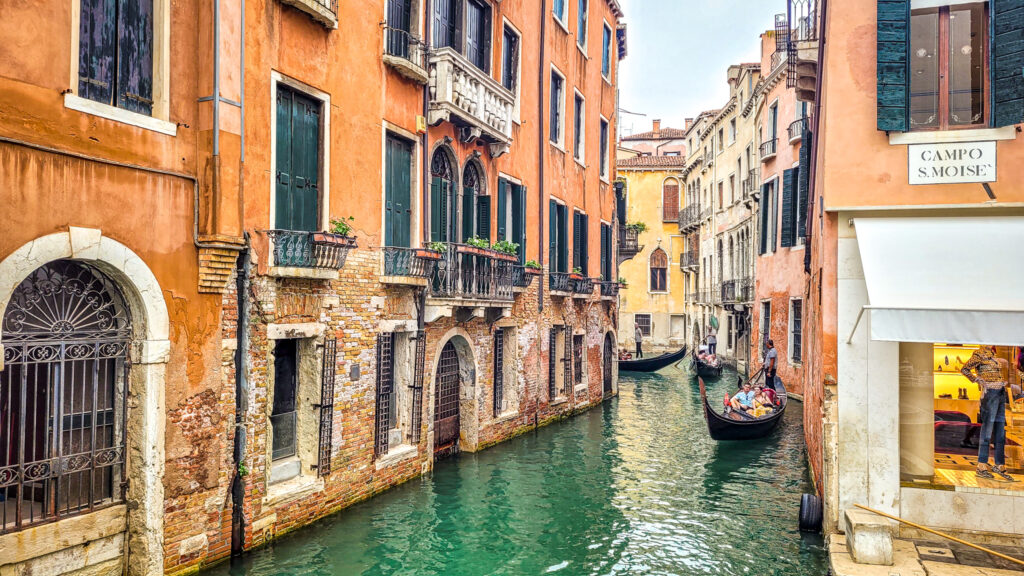
Waterfront architecture
A visit to San Marco would not be complete without a stroll along the canals of the area. The waterfront architecture of San Marco’s palaces and churches is impressive. You can admire the traditional Venetian colours of pink, green and yellow from the gondolas and vaporetto’s that run along the Grand Canal. San Marco is an excellent destination for lovers of art, culture and history.
Piazza San Marco
Piazza San Marco is a rectangular space in Venice and is considered the liveliest public square in Italy. The history of the square dates back to the 9th century when it was just a small patch of land in front of St. Mark’s Basilica. It remained a small square until the 12th century when it was expanded to its current size. It has served as a gathering place for many Venetians and tourists. Many events take place here like carousels and masquerade balls.
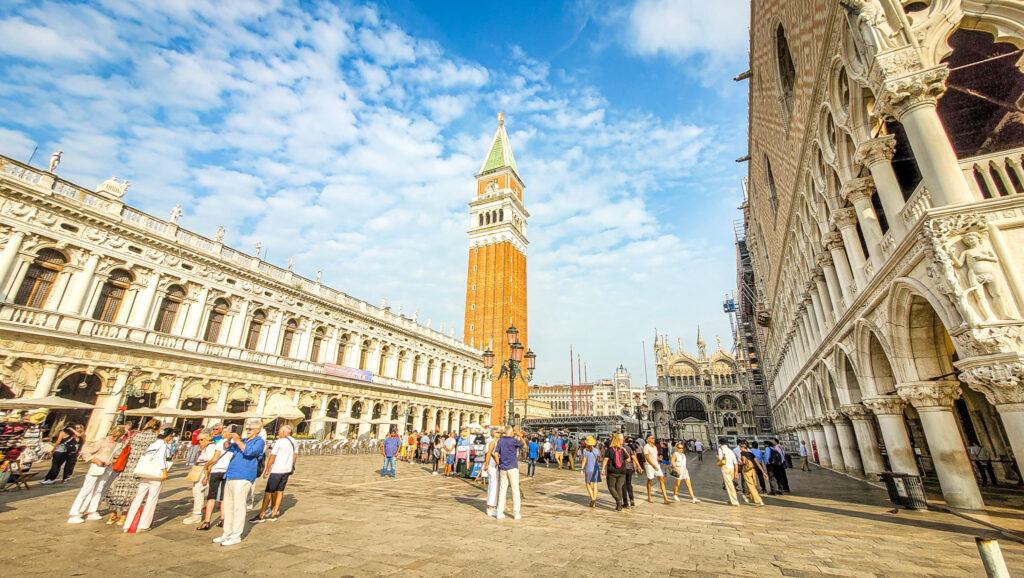
Palazzo Ducale
The history of Palazzo Ducale dates back to the 9th century, when the first building was constructed on the site. Over the centuries the palazzo underwent several transformations. The most significant changes happening in the 14th and 15th centuries. At this time the building was expanded and completed in the Gothic style that we see today. It was designed as a symbol of Venice’s power. And a place where the Doge of Venice could lead government affairs.

Architecture
When you step inside Palazzo Ducale you will be greeted by a breathtaking interior. The architecture and design showcases the wealth and power of Venice’s ruling elite. From the grand staircase to the ornate ceilings and stunning artwork. It’s clear that no expenses were spared in creating this masterpiece of Gothic architecture. The palace is filled with countless treasures. Including paintings by some of the most famous artists of the Renaissance era such as Tintoretto, Veronese and Bellini.
But this palace is not just a symbol of luxury. It is also a place of great historical significance. It was in this building that the Venetian government made some of the most crucial decisions that helped shape the course of history. As a hub of political power the Palazzo Ducale played a crucial role in the development of Venice as a city-state and in the country’s relationship with its neighbours.
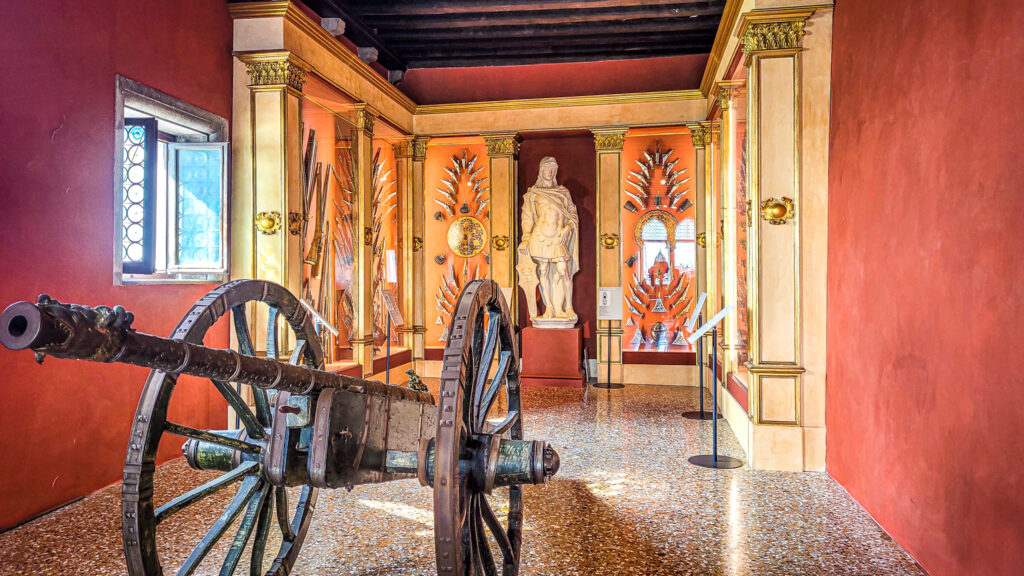
Prison
One of the most interesting aspects of Palazzo Ducale’s history is the prison. The palace has several dark and eerie cells. They were once used to held prisoners who had committed political crimes. Those who were unfortunate enough to end up in the palace’s prison were subject to harsh conditions. Many of them never saw the outside world again. This adds an eerie element to the palace’s history.
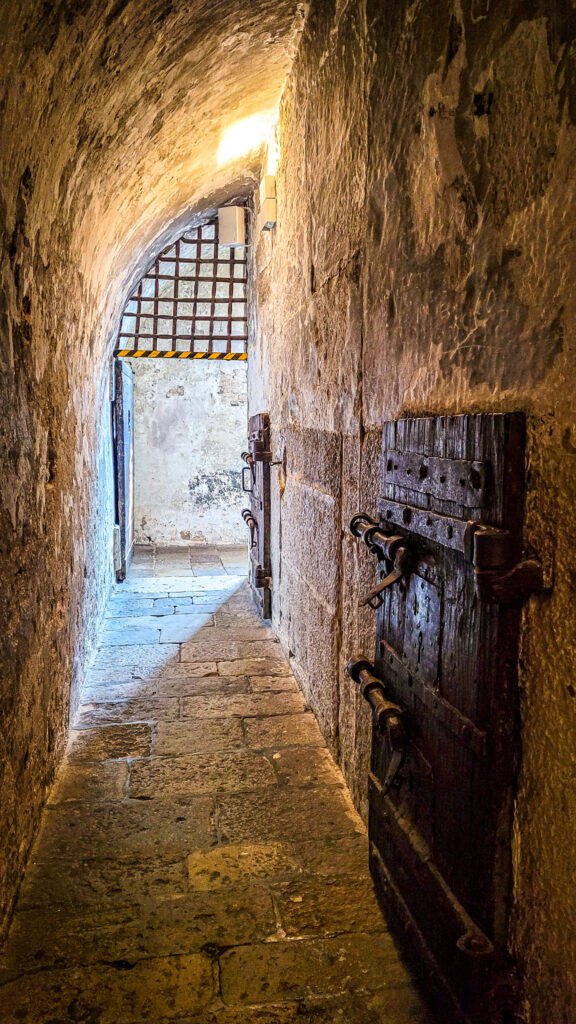
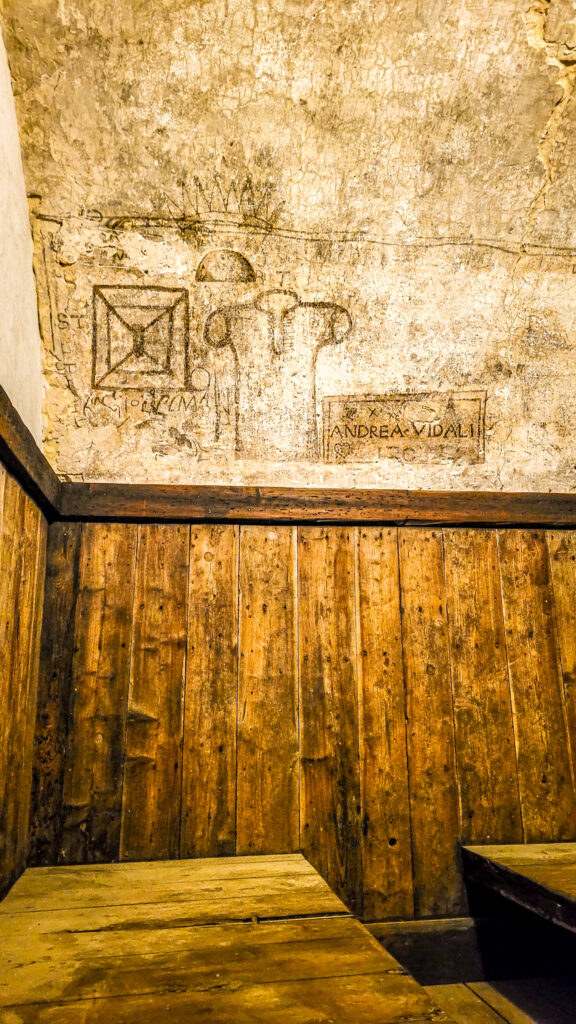
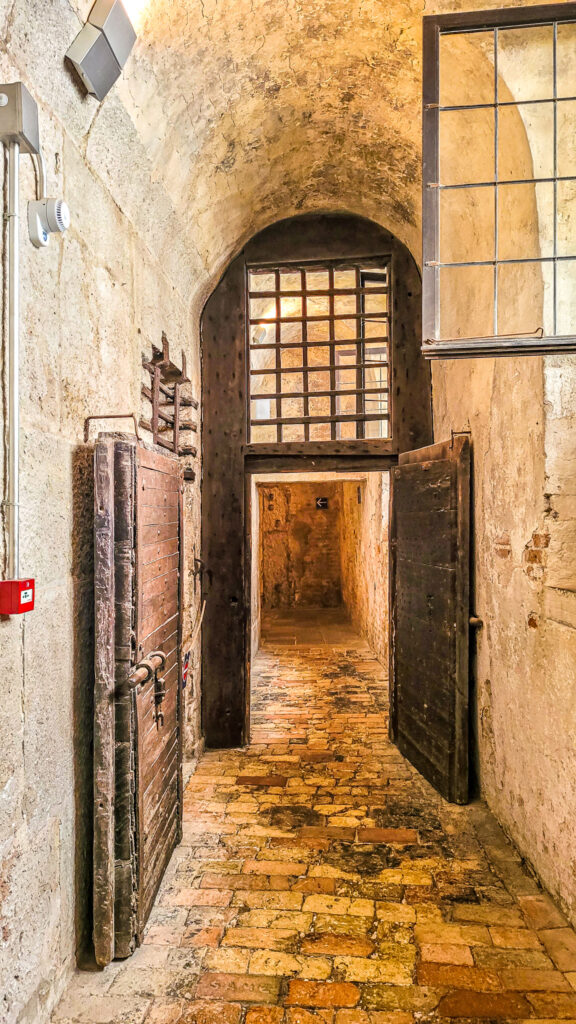
Ponte dei Sospiri
Ponte dei Sospiri, or the Bridge of Sighs, is a white limestone bridge located in Venice, Italy. It connects the Doge’s Palace to a new prison that was built across the canal known as Rio di Palazzo. The bridge was built in 1602 by Antonio Contino. Its enduring legacy has made it an essential piece of Venice’s history. The Bridge of Sighs is popular because of the legend that prisoners would sigh when they crossed the bridge for the last time. They caught their last glimpse of Venice on this bridge.
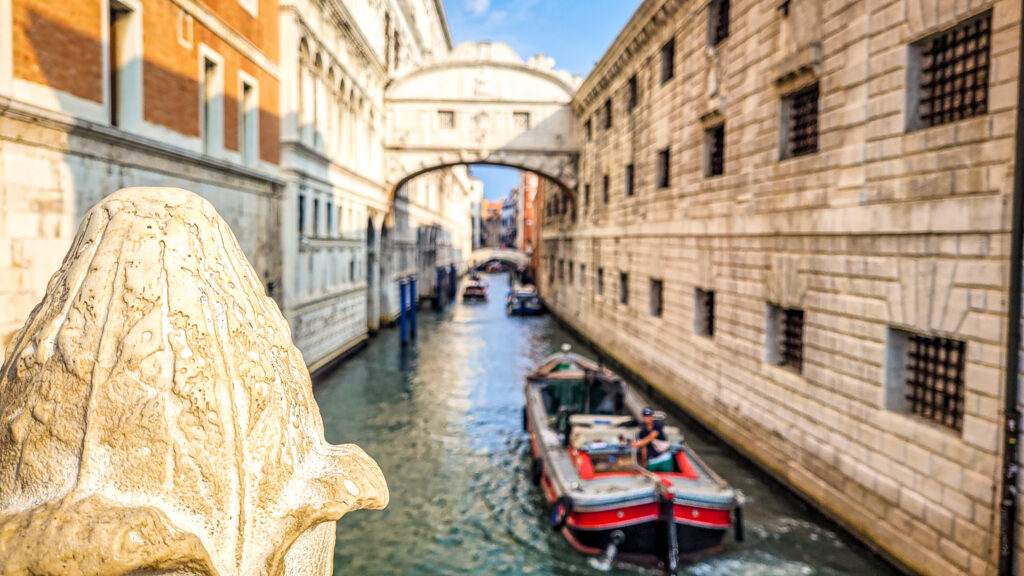
Baroque architecture
The Bridge of Sighs is an unique design of Baroque architecture. The bridge was designed to allow inmates to be transported directly from the Doge’s Palace to the prison without having to walk outside. It also served as a way for aristocrats to cross the canal that accessed the prison quickly. The bridge is covered and has two small windows with stone bars, which makes it resembles of a palace balcony.
The addition of this bridge is a critical point in Venice’s history as it marked the beginning of the city’s modern prison system. Prior to its construction prisoners were confined in smaller cells with no sort of sanitation. They were forced into labour for their survival. The construction of the new prison, which was separated from the Doge’s Palace, enabled inmates to have access to a better lifestyle, daily exercise, and fresh air. The Doge ordered the construction of the bridge to signify the superiority of the Venetian Republic’s legal system.

Eternal love legend
The bridge’s mystical history does not end here. As per the local folklore, the bridge is famous for its romantic and tragic stories that have captured the imagination of locals and tourists. It is also said that couples who kiss while riding a gondola under the Bridge of Sighs at sunset are blessed with eternal love. And those who do not are cursed with seven years of bad luck! These stories adds to the bridge’s magical appeal. It has become an essential part of Venetian culture and history.
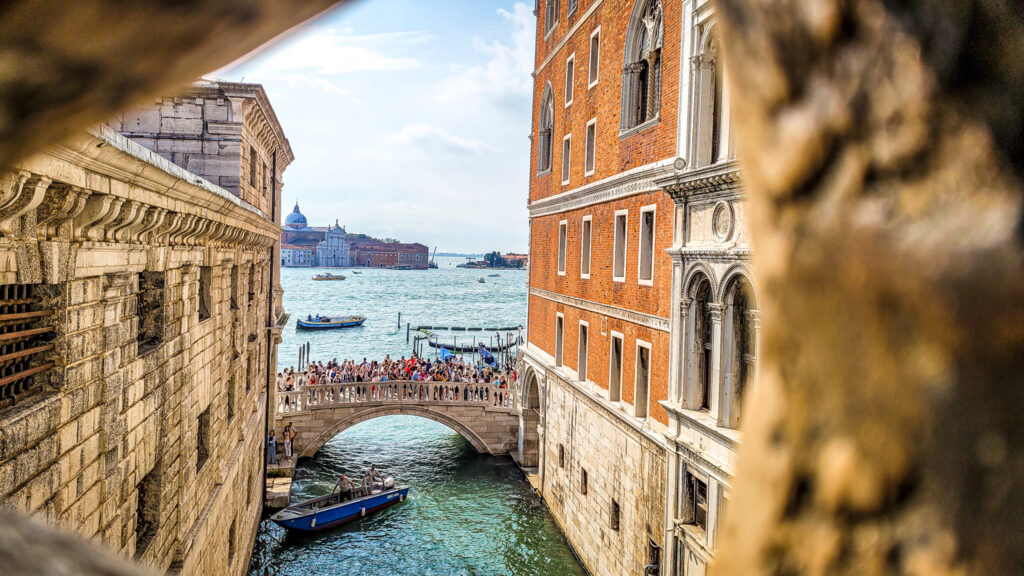
Basilica di San Marco
The Basilica di San Marco was built to house the relics of St. Mark. The Venetians adopted St. Mark as their patron saint. The construction began in 832 and the basilica was completed in 1092. Over the centuries the basilica underwent several renovations and additions.
An interesting detail about the Basilica di San Marco is the numerous treasures that were acquired during Venice’s extended history as a maritime power. The Venetians brought many precious materials from all around the world for the basilica, Some mosaics were taken from Constantinople, while others came from the Holy Land. The façade of the basilica is decorated with exotic marble from all over the Mediterranean.
One of the most striking features of the basilica is the four bronze horses that stand guard at the entrance. These horses are not the ancient relics that they appear to be. They were part of a ceremonial chariot that stood on top of the porch of the Hippodrome of Constantinople. The Venetians robbed the horses when they took the city in 1204. They have been a symbol of Venice’s military prowess ever since.
The Basilica di San Marco was also the scene of many notable events in Venetian history. It’s where many doges were crowned. Napoleon Bonaparte used the church as his stable while he was ruling over Venice. In 1807 the Basilica was robbed of many of its beautiful treasures. It was only after an agreement signed between Austria and France that most of these treasures returned to the basilica.
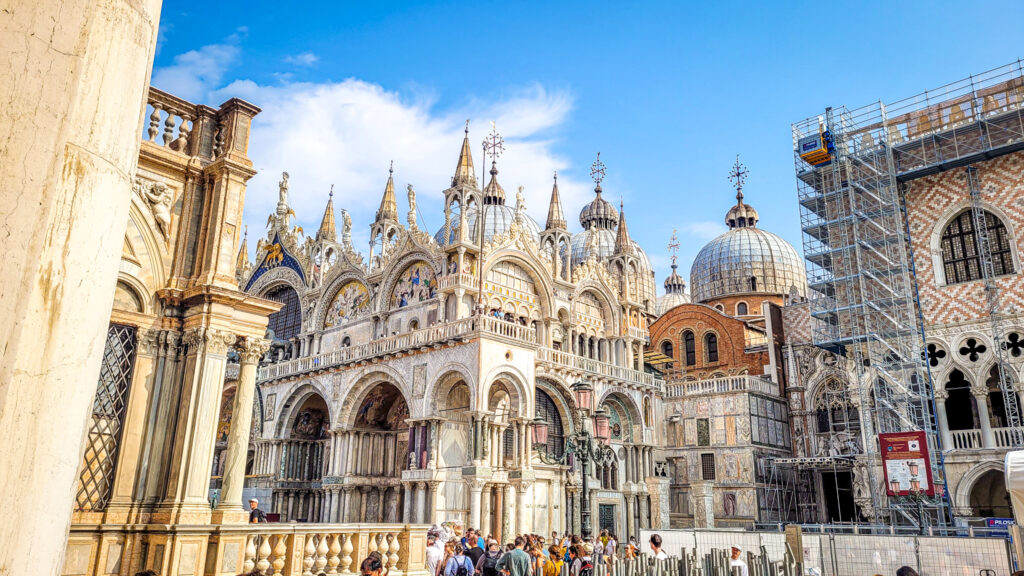
Museo Archeologica Nazionale di Venezia
The Museo Archeologica Nazionale di Venezia was founded in 1523 and is considered one of the oldest museums in Europe. The museum was established under the patronage of the famous doge Andrea Gritti. In the beginning the museum was called the “Museo Correr degli Antichi“. And it was located in the former Convento di Santa Croce. At that time the museum had a small collection of sculptures, coins, and inscriptions that were discovered in Venice during the 16th century.
The museum’s collection underwent considerable expansion in the 19th century. The collection moved to its current location, the Palazzo Pesaro-Papafava in Campo Santa Maria Nova. The new building had enough space to accommodate the museum’s growing collection of ancient artifacts, including Roman ceramics, glassware, jewellery, and sculptures.
The collection of the Museo Archeologica Nazionale di Venezia is extensive and includes artifacts from different periods and civilizations. One of the most famous exhibits in the museum is the Roman marble statue of Augustus, the first Roman emperor. The statue was discovered in Rimini in 1865 and later donated to the museum. Another exhibit not to be missed is the collection of Greek vases from the 6th to the 4th centuries BC.
The museum underwent a large renovation in the 1990. They wanted to modernize the exhibition spaces and make the museum more accessible to visitors. The works lasted for ten years and cost over 30 million euros. The renovation included the addition of new rooms and the reorganization of the exhibits to provide a more immersive experience for visitors.
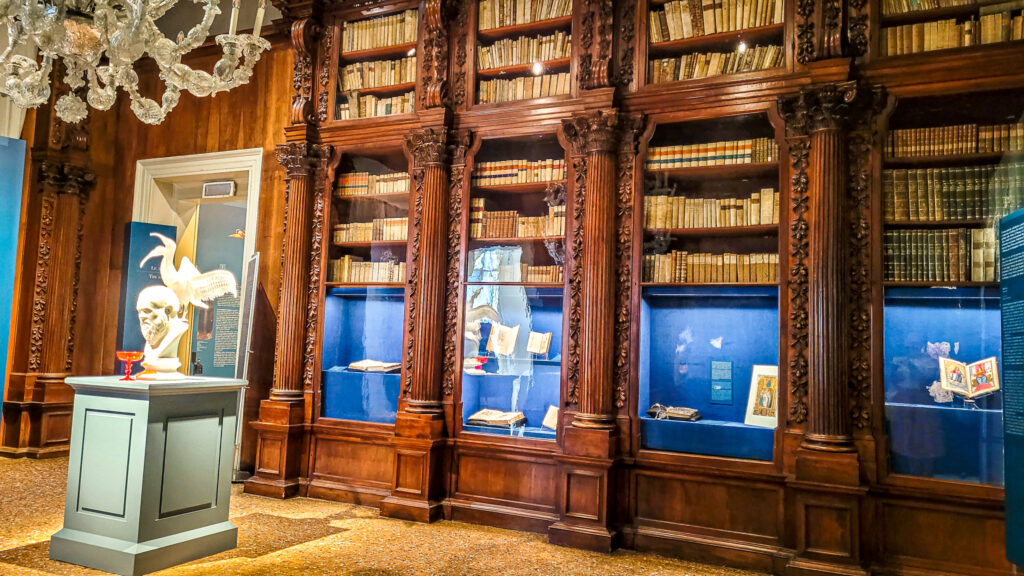
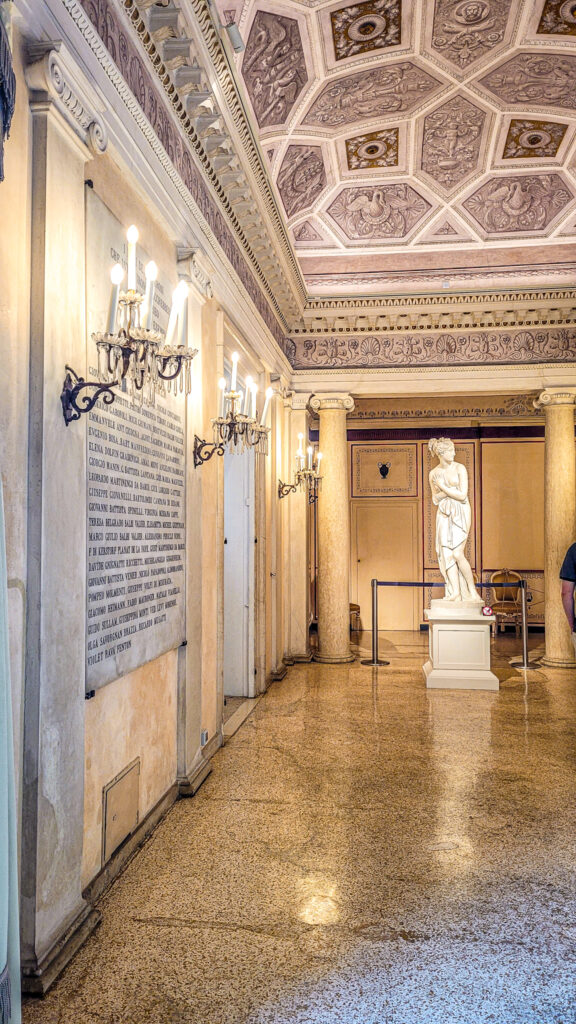
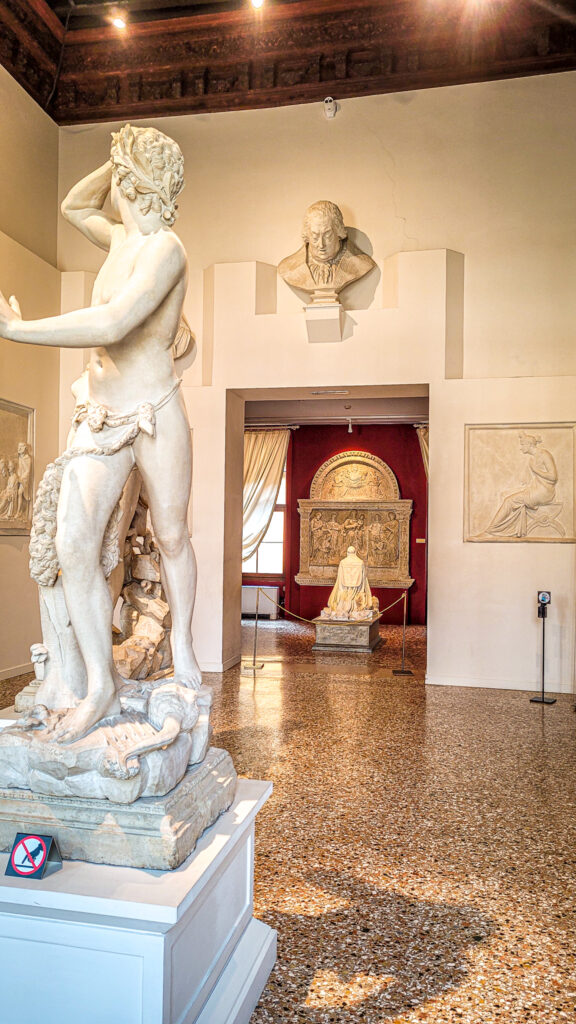
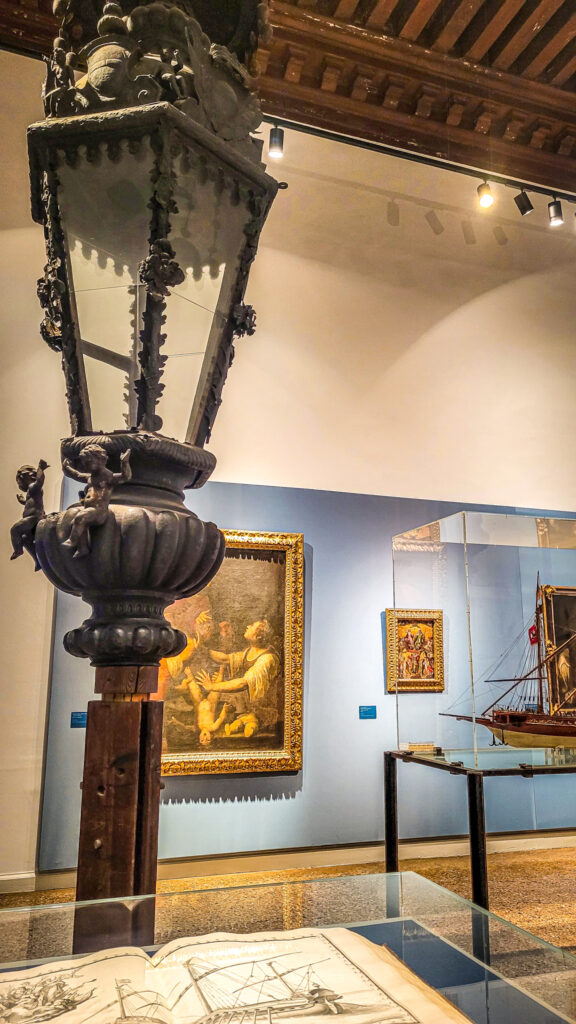
Giardini Reali
The Giardini Reali was first constructed in 1816 by order of the Austrians who had taken over Venice. It was meant to be a private garden exclusively for the use of the Austrian Emperor. The garden was then named the Imperial Garden of Bonaparte, after Napoleon I. He had chosen this location for his coronation in 1807. After the fall of Napoleon ghe garden was abandoned and left to decay.
In 1866, Venice became part of the Italian Kingdom. The garden was restored and reopened to the public. Its new name was the Royal Gardens and it quickly became a popular spot for Venetians. The garden is much smaller than its original size. But it still has its beauty and charm.
During the 20th century, the Royal Gardens underwent several restorations. Large changes were made to its layout and features. In 1924 a fountain and a pergola were added to the garden. The garden is home to sculpture exhibitions, art installations and various events.

Torre dell’Orologio
The Torre dell’Orologio or Clock Tower, was built between 1496 and 1499. The tower replaced an earlier clock tower that had been destroyed in a fire. The purpose of building the new tower was not only to replace the old one but to demonstrate the wealth and power of the Venetian Republic. The tower was designed by Mauro Codussi. It was a symbol of the city’s prestige and to showcase its artistic and scientific accomplishments. People from all over Europe came to Venice to see the tower and admire its various features.
One of the most unique features of the Torre dell’Orologio is the astronomical clock. This part is located on the façade of the tower. The clock displays not only the time. It also shows the position of the sun and moon in the sky, the current phase of the moon and the sign of the zodiac. The astronomical clock fascinated visitors and it became one of the most important landmarks in Venice.
By the 19th century, the Torre dell’Orologio had fallen into disrepair. The structure was about the collapse. In 1858 the city decided to renovate the tower. A team of architects and engineers were brought in to restore it to its former glory. The restoration process took three years to complete and the tower was once again open to visitors in 1861.
During World War II, the Torre dell’Orologio was heavily damaged by bombings. The clock tower was restored again and by 1948 the clock was back in operation.
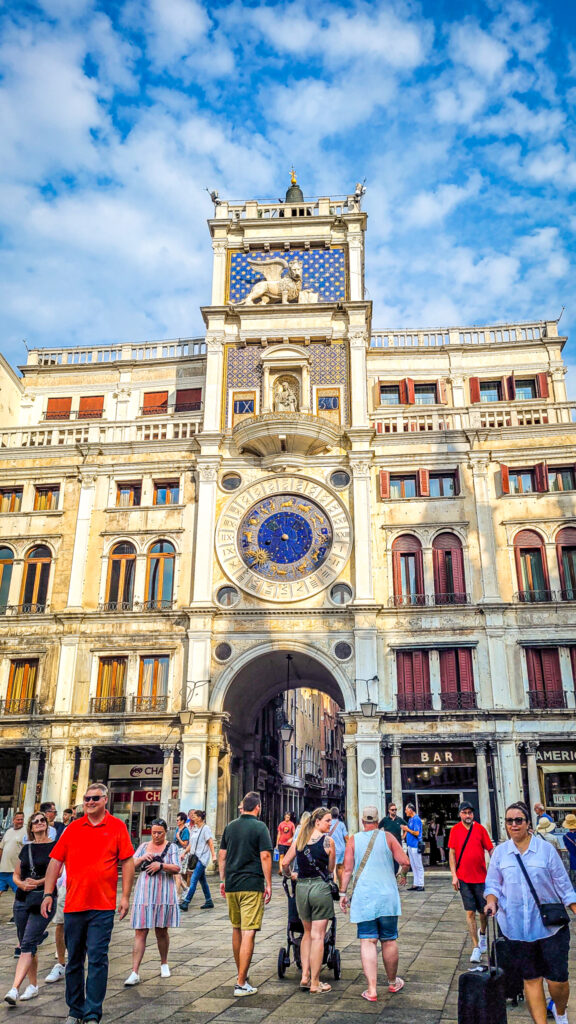
Santa Maria Zobenigo
The Santa Maria Zobenigo was first mentioned in historical records in the 9th century. It’s considered to be one of the oldest churches in Venice. The current building dates from the 17th century when it underwent a complete renovation under the direction of architects Gian Giacomo de’ Grigi and Martino Longhi the Younger. The church’s distinctive features include two bell towers and an impressive facade decorated with columns and statues.
The origins of the church’s name are not entirely clear. The word “Zobenigo” could refer to the location where the church was built. Which is said to have been the site of a former Jewish ghetto. Another theory is that the name is derived from the Venetian word “soana,” which translates to “a place where silkworms are bred.” Silk production was an essential industry in Venice, so it’s possible that the church was built as a tribute to this industry.
The high altar is decorated with a painting by Jacopo Tintoretto, depicting the Assumption of the Virgin Mary. There are also several works by famous artists such as Giovanni Battista Tiepolo and Francesco Fontebasso. The church’s interior is a testament to the Baroque style, with frescoes, stucco work and gilded decorations.
The Santa Maria Zobenigo has played an important role in Venice’s history, serving as a religious centre for centuries. During the 18th century the church organised concerts and operas. These events were attended by both locals and nobility. It also served as a meeting place for members of the Scuola del Santissimo Sacramento. They were a religious fraternity that provided assistance to the poor and sick.
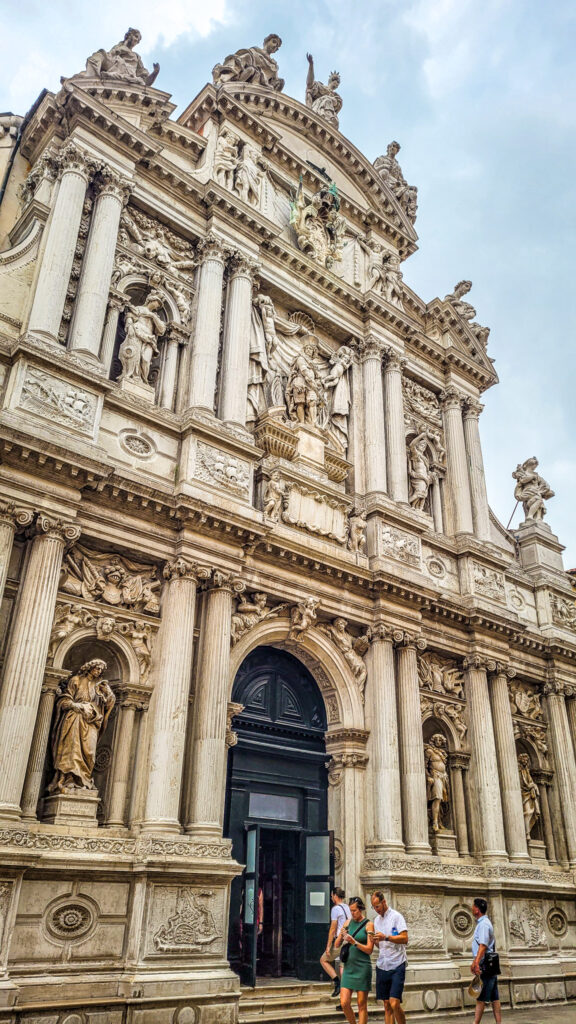
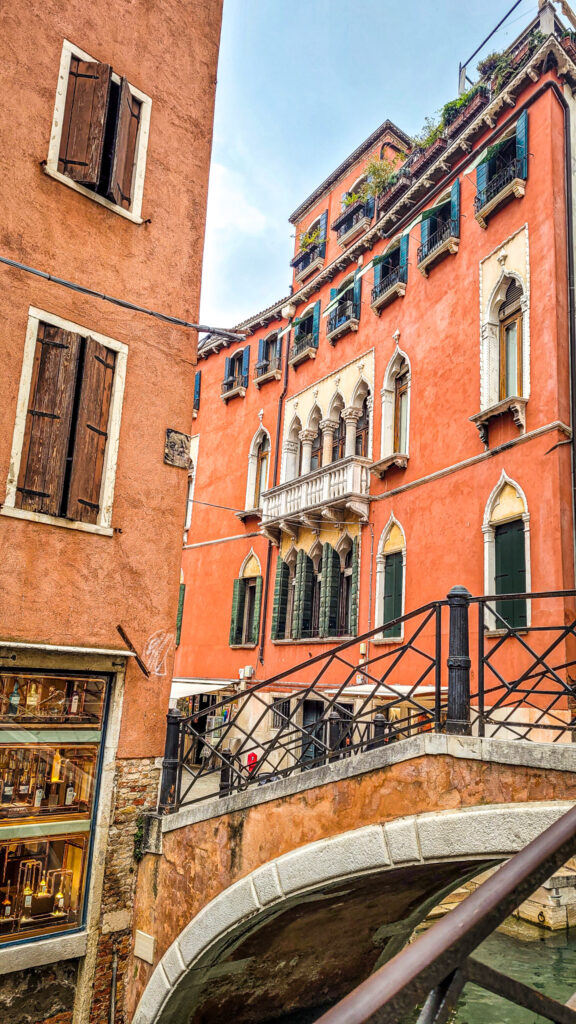
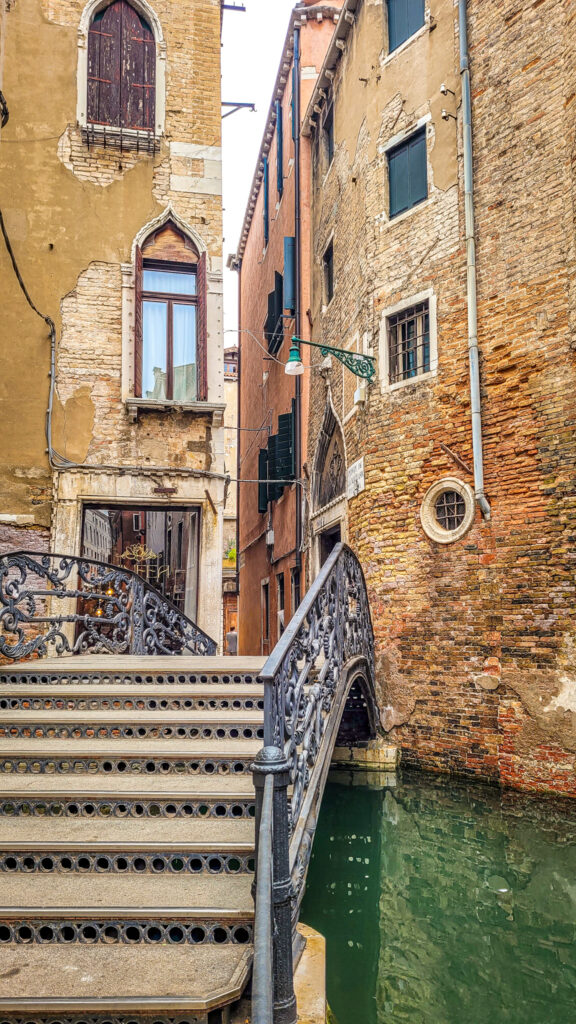
Neighbourhood San Polo
San Polo has been an important residential and commercial area since the Middle Ages. It was one of the six original districts of Venice created in the 9th century. The district derives its name from the church of San Polo. The saints Peter and Paul preached in this area in the early days of Christianity.
In the centre of the neighbourhood is the famous the Rialto Bridge. It’s one of the oldest and the most iconic landmarks of Venice, built in the 16th century. This bridge was originally made of wood but was rebuilt using stone with bold arches. Thanks to the design of Antonio da Ponte. The bridge had shops on both sides were merchants sold their goods.
San Polo is also famous for its picturesque Canals and waterways. The canals have played a vital role in its history and shaping its unique character. The Grand Canal is strategically located in the centre of the district and is the major waterway of the city and the highlight when visiting Venice. The canal is lined with pastel coloured buildings and dotted with gondolas, providing a breathtaking view of San Polo and the entire city.
When walking around San Polo, you will easily notice that it is full of charming streets, squares, small shops, and boutiques selling handcrafted items, artisanal food products, and fashion items.
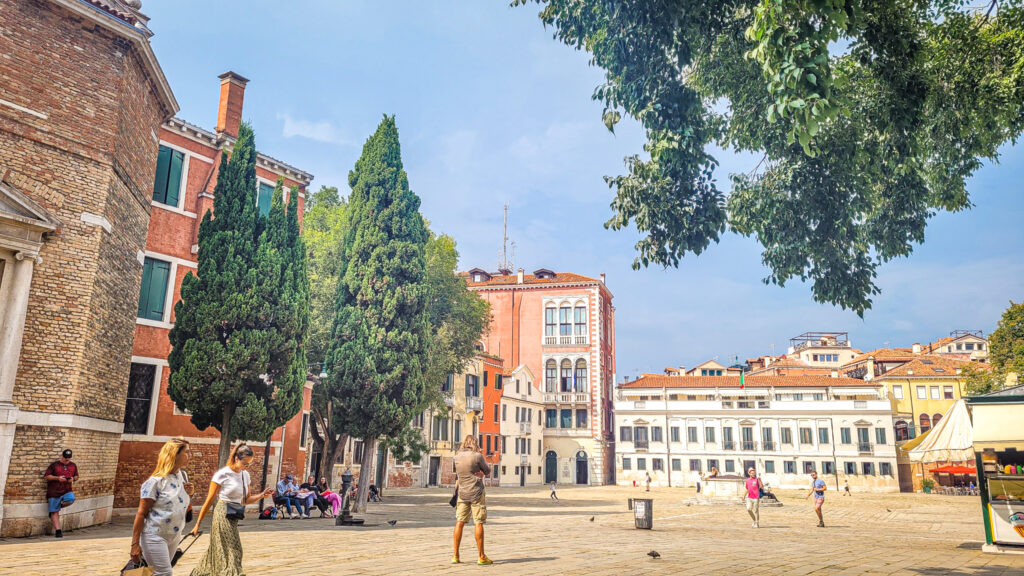
Basilica di Santa Maria Gloriosa dei Frari
The Basilica di Santa Maria Gloriosa dei Frari was built in the early 14th century as a Franciscan friary. It served as a gathering place for members of the Franciscan order. Over the years the church was expanded and modified by some of Venice’s greatest architects, including Jacopo Sansovino and Andrea Palladio. Today it is considered one of the greatest examples of Italian Gothic architecture.
When entering the church visitors are immediately struck by the beauty of its rising columns and sophisticated vaulted ceiling. The basilica’s most famous works of art are housed in its numerous chapels. The most notable is the Chapel of San Giovanni Evangelista. The chaple contains some of the most important works of the artist Titian, including his masterpiece “Assumption of the Virgin“. The sacristy is home to the famous “Pala d’Oro”. A stunning golden altarpiece created by renowned goldsmiths of the time.
An amazing feature of the Basilica di Santa Maria Gloriosa dei Frari is its grand façade. It is decorated with beautiful carvings and sculptures. The entrance to the basilica is lined by two imposing bell towers that were added in the 15th century. Don’t forget the large rose window at the centre of the façade.
Another feature that sets this church apart is the unique tombstones that can be found throughout the basilica. These stone slabs date back to the 16th and 17th century. The slabs are decorated with curious symbols and images that showcase the diverse interests of the Venetian people during this time.
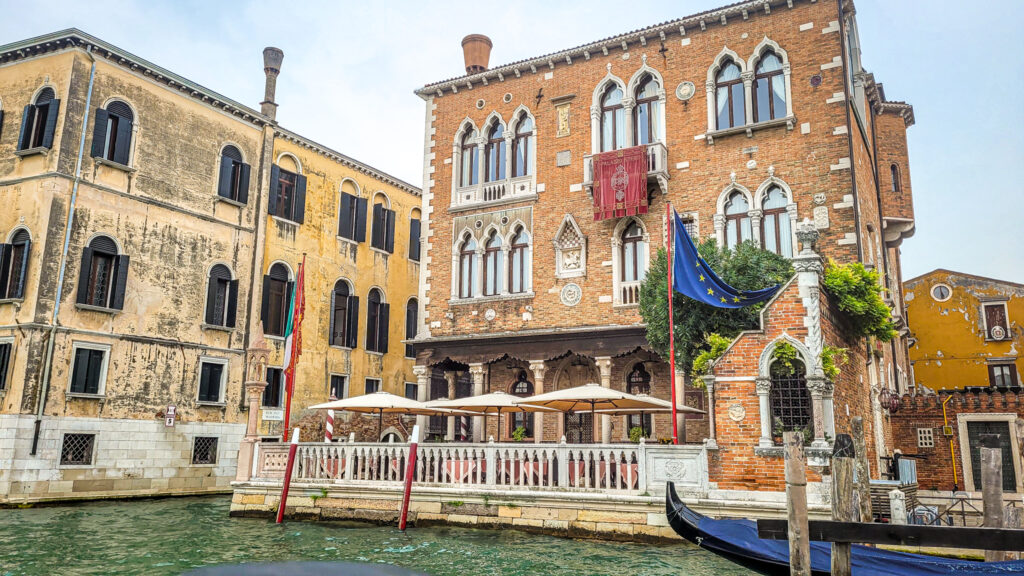
Galleria Internazionale D’Arte Moderna
The Galleria Internazionale D’Arte Moderna is a grand neoclassical palace located in the heart of Venice. Construction began in 1910 under the direction of architect Camillo Boito. He designed the building to showcase modern art for the people of Venice. The palace was inaugurated 13 years later in 1923. The construction marked a significant turning point in the city’s artistic history. It was later expanded in the 1930s and 1950s and has since then been designated as a national monument of Italy.
The museum owes its impressive collection to the efforts of Peggy Guggenheim. She is an American art collector and philanthropist who moved to Venice in the 1940s. Guggenheim was a patron of the arts and was dedicated to promoting modern and contemporary art. She donated her enormous collection of avant-garde art to the city of Venice in 1979. The museum has approximately 8,000 works of art. Including sculptures, paintings, drawings and photographs.
The works on display at the Galleria Internazionale D’Arte Moderna include masterpieces by some of the biggest names in modern art, such as Salvador Dalí, Pablo Picasso, Wassily Kandinsky and Jackson Pollock. The exhibits also feature works by Italian artists such as Giorgio De Chirico, Filippo De Pisis and Marino Marini. Visitors can also enjoy an impressive collection of early 20th-century art that includes Futurism, Cubism and Abstract Art.
Another fascinating feature of the Galleria Internazionale D’Arte Moderna is its connection to the Biennale. One of the most prestigious art exhibitions in the world. The museum is part of the Biennale’s permanent collection and hosts a range of special exhibitions throughout the year. It’s the perfect place for art lovers to explore contemporary art and learn more about the history of the Biennale and its impact on art.
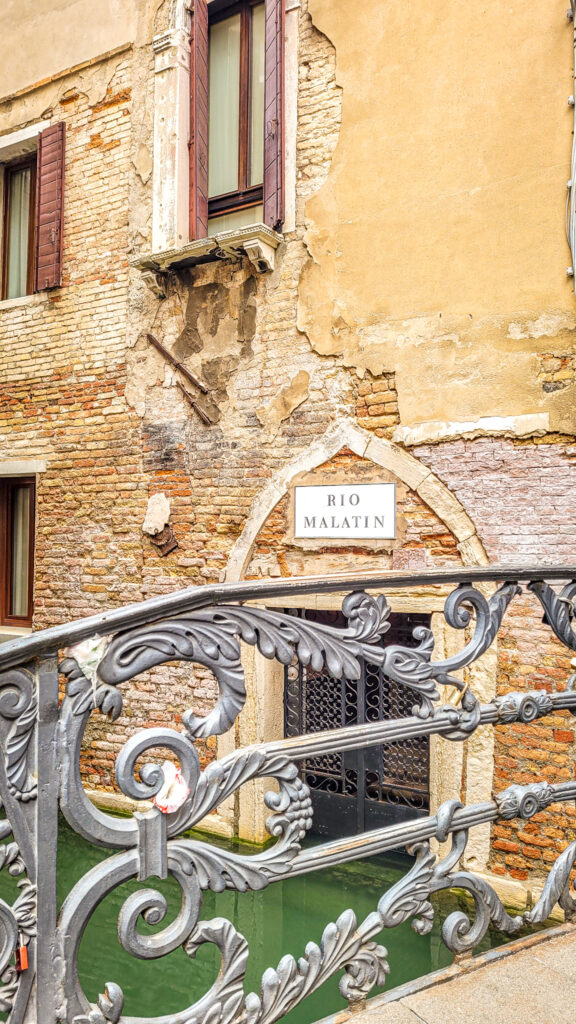
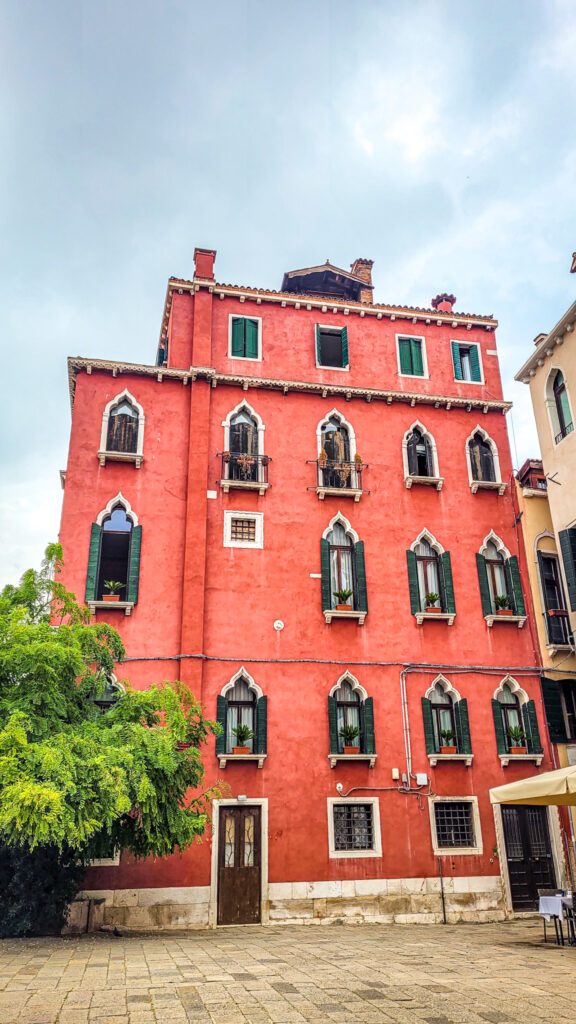

Ponte di Rialto
Other monumental highlights to visit in Venice is the Ponte di Rialto and surrounding area. The construction of the Ponte di Rialto was a daunting project that took a team of engineers, architects and builders several years to complete. The bridge was built on the site of an old pontoon bridge that linked the two banks of the Grand Canal. In 1181 floods destroyed the pontoon bridge and the city officials decided to replace it with a more robust and permanent structure. Several designs were submitted and it was finally decided to build a stone bridge. The constructors were Nicolò Barattieri and Antonio da Ponte. They were chosen through a competition. The work began in 1588.
As the bridge was being built, it was met with numerous challenges, including unstable soil, high tides, and strong currents. Despite these challenges the architects and engineers found innovative ways to overcome them and created a masterpiece. The bridge’s design reflects the Renaissance architecture. The bridge has a single arch that spans 28 meters. And two smaller side arches that provide access to the shops on either side of the bridge.
The Ponte di Rialto is not only known for its beauty and impressive engineering but also for its historical significance. In the olden times the bridge served as the only link between the two banks of the Grand Canal. The bridge was a critical meeting point for merchants and traders. It was also the place where commercial transactions were made. It used to be an essential economic landmark in Venice.
Over the years the bridge has undergone several restoration works to preserve its charm and make it more accessible. The most recent restoration was in 2016 when the bridge was repaved with Istria stone and equipped with modern lighting fixtures.
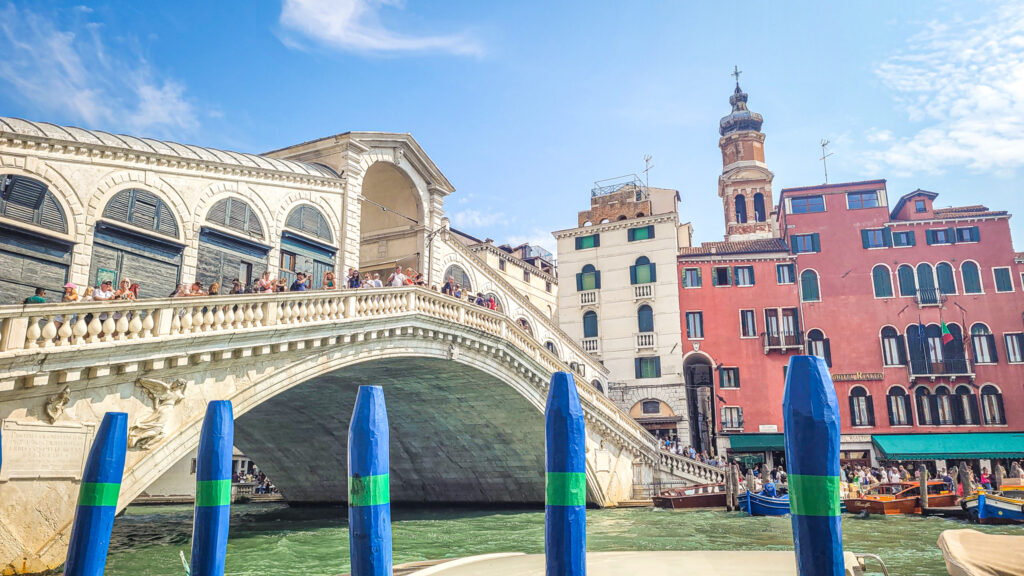
Neighbourhood Castello
Castello was named after a fortification, a castle, in Italian “castello“. The castle was built in the area during the 9th century. The fortification was meant to protect the inhabitants of the neighbourhood from foreign invasions by sea. Back then Castello was a sparsely inhabited area that consisted mainly of marshes, beaches and salt flats. In the 12th century a number of churches, basilicas, and monasteries were built in Castello. Including the famous San Pietro di Castello Basilica. The basilica was once the city’s cathedral and is now a beautiful church that is worth visiting. Castello is a lively residential area that is home to many Venetians. As well as a variety of monuments, public squares and museums that depict its fascinating history.
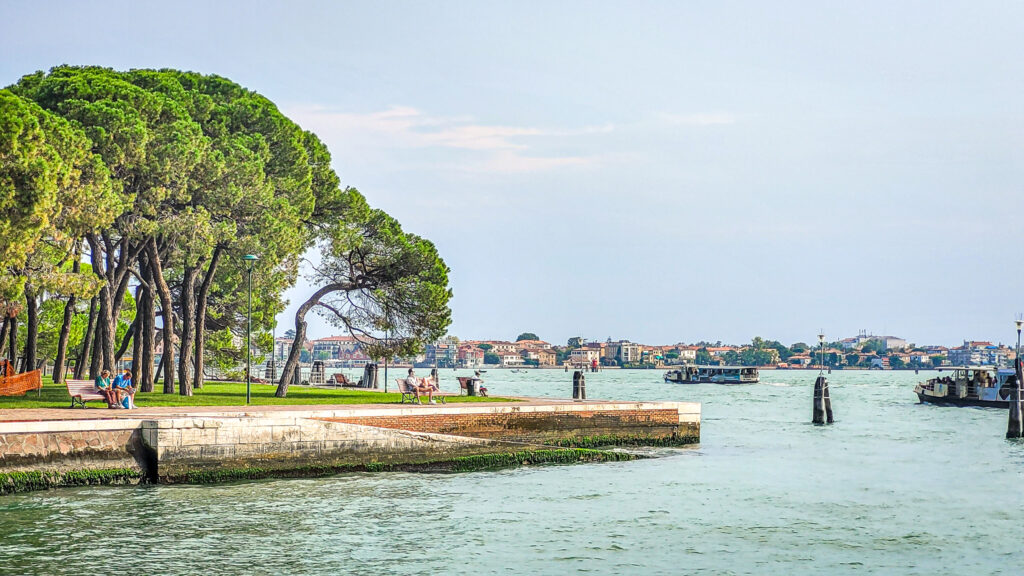
History of Castello
Castello holds an important place in Venetian history and is associated with many legends and stories. For centuries it was the seat of government and the residence of the Doge. In the 16th century Castello witnessed an event that came to symbolize the power and greatness of Venice: the arrival of the Ottoman fleet at its shores. The Venetians, under the leadership of the Doge, put up a fierce fight against the invaders and ultimately defeated them. The event marked the peak of Venetian maritime power and is commemorated in several monuments and public squares in Castello. Including the imposing Arsenal, once the largest shipyard in Europe.
Cultural heritage
Castello has a rich cultural heritage that is reflected in its architecture, art and music. The neighbourhood is home to a number of museums and galleries. Such as the Galleria Querini Stampalia and the Museo di Arte Orientale. Castello is also known for its musical traditions. It is the birthplace of the legendary composer Antonio Vivaldi. You can visit the church where Vivaldi worked as a priest. And also the famous music school where he taught the violin.
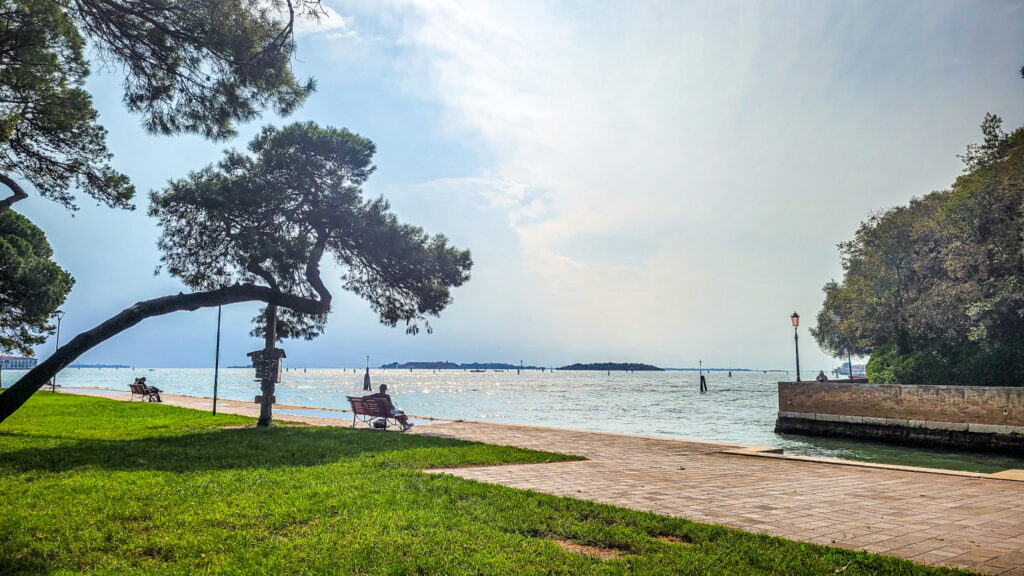
Local food
Castello is a great place to discover Venetian food and wine. The neighbourhood is home to a variety of traditional osterias, trattorias and wine bars that serve delicious local specialties, such as fish, seafood, polenta, and risotto. Don’t forget to try the best wines and spirits from the Veneto region. Some of the most recommended places to dine in Castello include Osteria Ai Do Farai, Taverna da Baffo and Cantine del Vino già Schiavi.
Giardini Della Biennale
Giardini Della Biennale has an interesting history that dates back to 19th century. In 1893 the first international art exhibition was held in Venice to promote contemporary art and architecture. The merchants of Venice donated the land. The garden was designed by a famous architect Enrico Trevisanato. It is still the primary location for the International Art Exhibition which takes place every two years attracting thousands of visitors.
The garden is divided into two parts. The first part features a beautiful entrance arch. And the second is located on the eastern end and is known as the Giardino delle Vergini. Both sections have well-preserved monuments and sculptures that date back to the early 20th century. The garden is home to over 30 pavilions, each exhibiting a different country’s art and architecture. Among the most popular pavilions are Italy, Germany, France and the United States.
Giardini Della Biennale offers visitors the opportunity to see some of the world’s most significant art and architecture up close. The International Art Exhibition showcases works of art from around the world, including famous artists such as Pablo Picasso, Gustav Klimt and many more. Aside from the art the garden also hosts various events and festivals. From book fairs to music concerts and International Film Festivals.
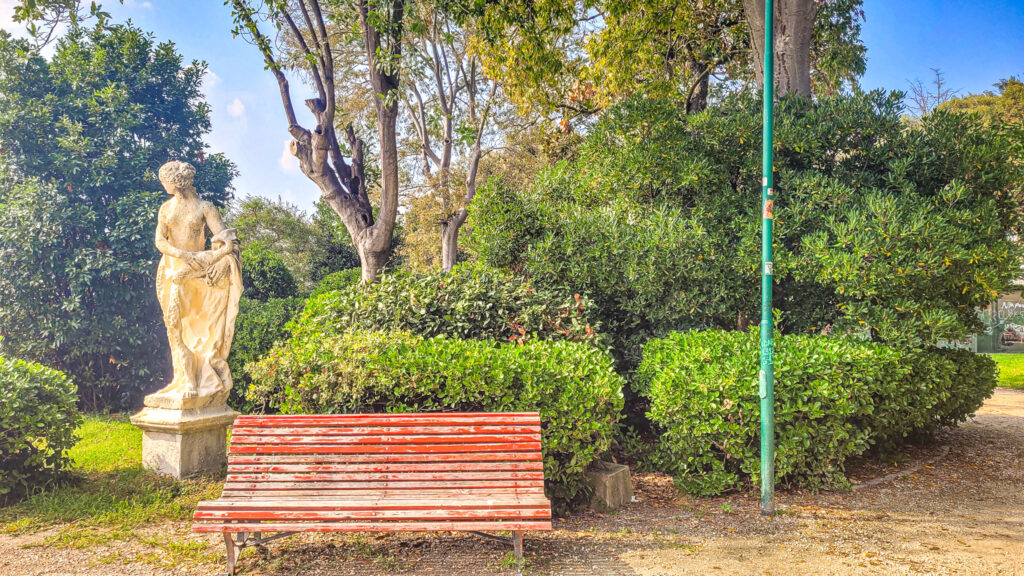
Arsenale di Venezia
The earliest records of the Arsenale date back to the 8th century when a small shipyard was established in the area. Over the years the Arsenale grew to become one of the largest naval complexes in the world with up to 16,000 people employed at one point. At the height of its glory the Arsenale was capable of producing a fully-equipped warship in just a single day.
In addition to ship production the Arsenale di Venezia was also responsible for manufacturing weapons. And it played a crucial role in the naval power struggles of medieval Europe. The Arsenale’s strategic location in the Adriatic Sea allowed Venice to secure its commercial interests. It was a significant contributor to the Republic of Venice’s wealth and prosperity.
Aside from its historical importance the Arsenale is a beautiful example of European architecture. The complex comprises several impressive buildings. The Porta Magna is the main entrance of the complex. The Colonne di San Marco e San Teodoro are two magnificent columns decorated with statues of the patron saints of Venice. The Arsenale also has a stunning clock tower that dates back to the 15th century. Visitors can explore these architectural gems and learn about the history of the complex through guided tours.
The Arsenale di Venezia has also played a significant role in the cultural life of Venice. The Biennale di Venezia is an international art show that attracts thousands of visitors every year. It is hosted in the Arsenale’s exhibition halls. The art exhibition has been held in the complex since the 19th century and it provides a unique opportunity to experience the creative vision of contemporary artists in a historic setting.
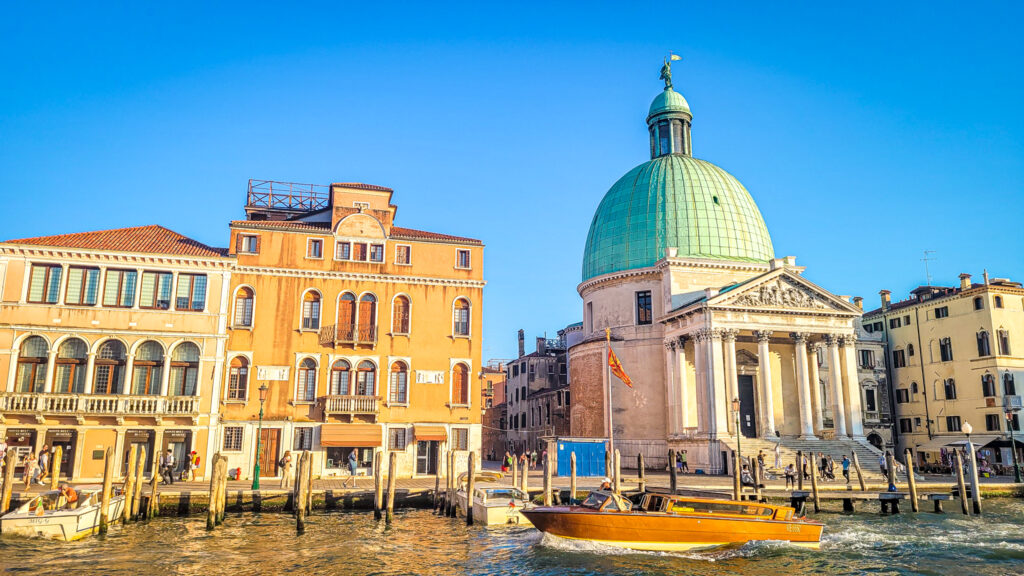
Neighbourhood Giudecca
Giudecca is said to have been first inhabited by people who fled to the lagoon during the barbarian invasions in the 5th century. In the 9th century the island became part of the settlement of the Venetian Republic. Over time it became a strategic location for shipyards, workshops and palaces for wealthy Venetians. The ancient nobility built here and held it for centuries, giving the island a unique privilege.
The order of the religious women of Santa Maria della Presentazione, better known as the “Redentore“, played an important role in the district’s history. The church of the Redentore was located at the southern tip of the neighbourhood. The church was built in the late 16th century by the renowned architect Andrea Palladio. It is the most notable architectural monument of Giudecca.
The neighbourhood has also seen its fair share of decline and redevelopment over the centuries. During the 20th century the area fell into a state of neglect causing many locals to move away. In recent years there has been a revived interest in Giudecca. Today the neighbourhood has undergone a transformation into a trendy locale visited by tourists and art enthusiasts.
One of the key attractions of Giudecca is its stunning views of Venice’s canals and old city. Visitors can take a vaporetto (water bus) from the main island to Giudecca and wander along its canal-side promenade that leads to the Church of the Redentore. The nearby Palazzo Cavanis and the Molino Stucky are two of the island’s architectural treasures. They are stunning examples of the sublime beauty of Venetian architecture that can be found away from the crowds.

Basilica Santa Maria della Salute
Construction of the Basilica Santa Maria della Salute began in 1631 as a response to a devastating outbreak of the bubonic plague in the city. The Venetians turned to the Virgin Mary hoping that she would help them overcome this terrible illness. They vowed to build a church to honour the Virgin Mary if the disease ceased. In November of the same year the outbreak eventually came to an end. The Venetians still kept their promise. In 1632 the construction of the basilica began. It took almost 50 years for the building to be complete due to funding issues. It was finally opened to the public in 1687.
The architecture
The Basilica Santa Maria della Salute stands out for its impressive architecture. The church was designed by the Venetian architect Baldassare Longhena. He was known for his baroque designs. The dome is the most recognizable feature of the basilica and is stretching over 30 meters across. The structure is supported by columns and statues of biblical figures. A ring of angels look down on visitors. The church’s façade is equally complex with ornate motifs and sculptures of saints decorating the exterior. Inside visitors can admire the artwork from some of Venice’s greatest artists, including Titian and Tintoretto.
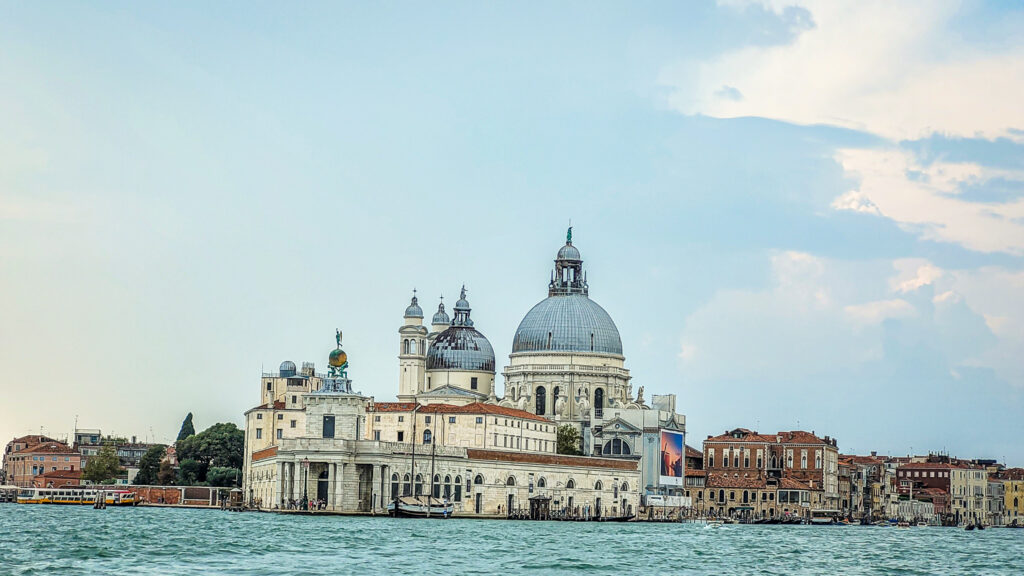
Role during the Black Death
In addition to being a symbol of gratitude to the Virgin Mary for the end of the bubonic plague, the basilica also played a role during another outbreak of disease. The Black Death arrived in Venice in 1630 claiming the lives of thousands of people. The basilica became a place of refuge for the sick and dying. The basilica provided shelter and a degree of comfort during their final moments. Priests and nuns helped the sick and those who were able volunteered to dig mass graves. Even a statue of the Virgin Mary was carried through the streets in a desperate attempt to bring a resolution to the disaster.
The Basilica today
In the present day the Basilica Santa Maria della Salute is a cultural landmark that attracts visitors from all over the world. It’s a beautiful example of Venetian baroque architecture with a long history that speaks to Venice’s resilience during times of trouble. Visitors can light candles in the church, attend events and ascend to the top of the dome for a breathtaking view of the city. The church’s location on the edge of the Grand Canal means that it is easily accessible by vaporetto. The Venice’s water buses. The basilica is a must-see for anyone seeking to understand the unique history and culture of Venice.
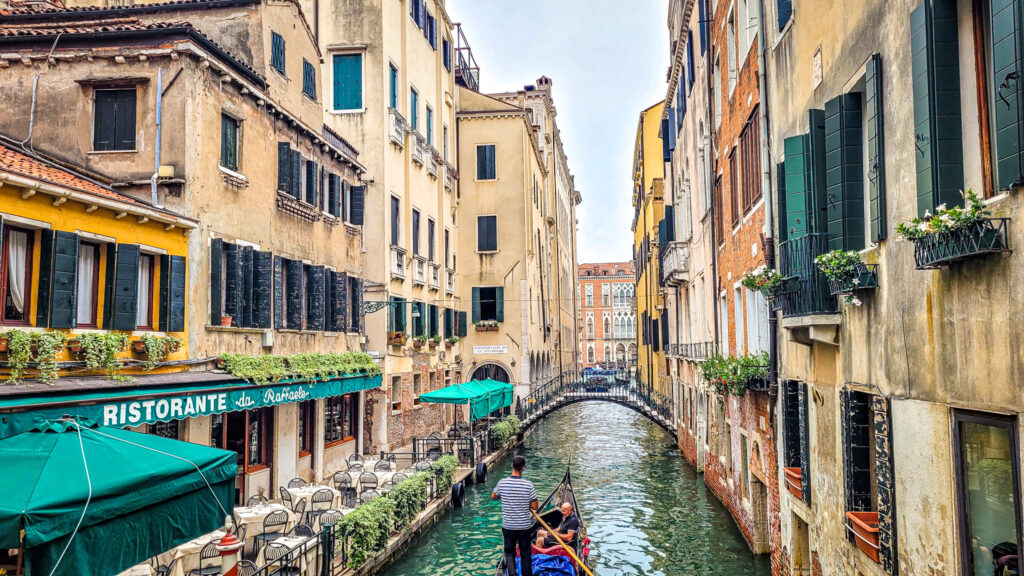
Monumental highlights in Italy
Come and explore the irresistible charm of Italy’s rich historical sites! Take a journey through the monumental highlights of Bologna, one of the most underrated cities in the country. Its history dates back to the Renaissance period. And let’s not forget about Modena. A hidden gem where you can escape the crowds and indulge in its unique allure.
Florence is the capital of Tuscany. Let me tell you, it’s one of the most fascinating destinations in Italy! You’ve got art, architecture, and history all bundled up in this magnificent city. Have you heard about the stunning Duomo and the amazing art collection at the Uffizi Gallery? Trust me, there’s so much to see and explore! In my latest blog post, I’ll be your guide to the most monumental highlights you shouldn’t miss in Florence.
And if you fancy a scenic hike with breathtaking views of pristine blue waters, Cinque Terre is the place to be! Discover its history, architecture and culture of this natural wonder in Italy.
Discover the charm of Pisa, Italy. The city is famous for the iconic Leaning Tower. Explore the best monumental highlights and immerse yourself in unique architectural masterpieces, fascinating history, and local culture. Plan your trip to Pisa and make unforgettable memories!
